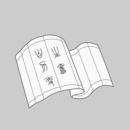
制造技术第1卷 铸造、成形和焊接 (英文版 原书第3版)
正版新书 新华官方库房直发 可开电子发票
¥ 34.57 6.4折 ¥ 54 全新
库存2件
江苏南京
认证卖家担保交易快速发货售后保障
作者P N Rao 著作
出版社机械工业出版社
ISBN9787111290674
出版时间2010-09
装帧平装
开本其他
纸张胶版纸
定价54元
货号SC:9787111290674
上书时间2024-11-20
- 在售商品 暂无
- 平均发货时间 11小时
- 好评率 暂无
- 最新上架
商品详情
- 品相描述:全新
- 全新正版 提供发票
- 商品描述
-
作者简介:
作者:(美国)拉奥(P N Rao)
主编推荐:
《制造技术靠前卷:铸造、成形和焊接(英文版?原书第3版)》:时代教育?国外高校很好教材精选
内容简介:
本书是一本适合于我国高校机械工程及自动化以及相关专业的很好英文原版教材,同时也不失为一本专业的教学参考书,可用于相关专业的专业英语教学,并可供机械工程和制造工程领域的专业技术人员参考。 ·本书侧重机械制造的基本内容,包括工程材料及性能、金属铸造生产过程、金属成形过程和焊接生产四大部分。 ·每章后都有习题及参考文献,便于学生自学自查。 ·与上一版本相比,本版将原来的29章内容归纳、整理为12章,语言更加精炼。 ·增加了抗拉实验、激光热处理、快速原型等十余处内容,使知识点更为丰富。
摘要:
ow Carbon Steel This is generally known as 'soft' or mild steel. It is used where ductility and softness are important and high tensile strength is not required. These are tough but not resistant to wear, since these are soft, can be very easily formed and later can be carburized to increase the hardness and wear resistance.
Low-carbon steels are used for such operations as spinning, cold bending, rivetting, swaging, etc. These are not responsive to normal heat treatment but for case hardening. They form the largest percentage of steel produced, being the cheapest engineering material. Products such as screws, nails, nuts, bolts, washers, wire fences, light and heavy structural members, machine parts, forged parts can be made from low-carbon steel. It is also used for tin plate and automobile body sheet. It is available in form of sheets, squares, rounds, plates, and wires.
Medium Carbon Steel They are less ductile but harder and have greater tensile strength than low-carbon steels. They also have better machining qualities and are more responsive to heat treatment.
These are widely used in the industry. Medium carbon steels are used for making shafts, connecting rods, spindles, rail axles, gears, turbine bucket wheels, steering arms and other machine
...
目录:
出版说明
序
Preface
1 Introduction
Objectives
1.1 Manufacturing Processes
1.2 Break-Even Analysis
Summary
Questions
Problems
2 Engineering Materials
Objectives
2.1 Engineering Properties
2.2 Ferrous Materials
2.3 Non-Ferrous Materials
2.4 Heat Treatment of Metals
Summary
Questions
3 Metal-Casting Processes
Objectives
3.1 Introduction
3.2 Patterns
3.3 Moulding Materials
3.4 Cores
Summary
Questions
Problems
4 Gating Systems for Casting
Objectives
4.1 Introduction
4.2 Gating System Design
4.3 Risering Design
Summary
Questions
Problems
5 Melting and Casting Quality
Objectives
5.1 Melting Practices
5.2 Casting Cleaning
5.3 Cas
...
— 没有更多了 —












以下为对购买帮助不大的评价